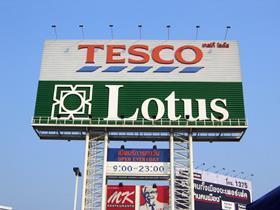
Business in Asia can be a daunting prospect for British firms, which must compete on a global scale with produce powerhouses such as the US, Chile, Peru and New Zealand.
But if the booming population and rising consumer spend, as well as the emergence of supermarket chains across Asia, proves too attractive to resist, there are still some opportunities that are up for grabs.
The growing presence of UK supermarkets in Asia – think Tesco in Thailand or Malaysia, Waitrose in China or Marks & Spencer in Hong Kong – can offer UK suppliers a way into Asia through expanding existing supply chains and capitalising on business contacts.
“Lots of countries in Asia look interesting, such as the Philippines, Singapore and Hong Kong. They are the Rotterdams of south-east Asia,” explains John Giles, divisional director at Promar International. “One way to pick is where are your customers active, and follow them. You could pick any country, but with your customers you know how they operate, and they are probably looking to operate in the same way in emerging markets.”
Expanding alongside a key retail customer can help tap into a new Asian market in terms of exports, but it could also lead to opportunities in local production.
Normally, the reason British firms establish a presence overseas is to secure year-round supply to the domestic market, says Giles, adding that this may be relevant in Asia for sourcing things like mangoes from India, apples from China, and exotic fruit from Thailand. But British firms can also play a role in supplying local Asian markets through establishing growing operations based on their own high standards of production.
Reduced shipping times and a gap in the market for high-quality produce grown in Asia using the latest technology and growing techniques is already tempting overseas produce businesses to establish JVs or growing agreements.
Dutch produce grower Levarht has set up a marketing agreement for contracted tomato production from glasshouses south of Beijing, while UK berry supplier S&A Produce has several trials in place across Asia.
Key to success is a step-by-step approach, says S&A’s director of operations for Asia Pacific, Oliver Davies. “JVs and growing partnerships in Asia are very attractive on paper. There are lots of opportunities but finding like-minded partners and local expertise is challenging,” he says.
“Starting a project like this, you would have to invest a lot of your time in that country, teach skills to your local employees and also overcome the cultural barrier. Local government can also have a big influence on your project.
“I would advise a step-by-step approach to projects like this as it’s a big risk and investment, however the rewards are there if you do it correctly.”
British firms have a proven track record in successful JVs in places such as southern Europe, north Africa and Latin America, says Giles, which could set them in good stead for a similar project in Asia. In addition, the UK is renowned for its R&D, technology and expertise as further USPs to any new growing partnership.
“One of the things I’ve felt is that we are not likely to become a big supplier of produce, but our understanding of how modern supply chains operate, our knowledge in R&D and our expertise in training is something we do have,” says Giles. “Our best route to market in Asia might be to promote those things, rather than selling our product.”
Aside from following retail customers, choosing which Asian market to target is a case of “picking the right country at the right time”. “You have to understand the macroeconomic issues as well as the produce industry,” he says. “Indonesia, Malaysia and Thailand are all interesting. Cambodia, Laos and Myanmar are somewhat behind and are relatively undeveloped in terms of economy and physical infrastructure. To go there would be really pioneering and you’d need to have a really long-term view.”
While some firms may prefer to invest closer to home, for those who relish a challenge it’s clear Asia still has plenty to offer.



